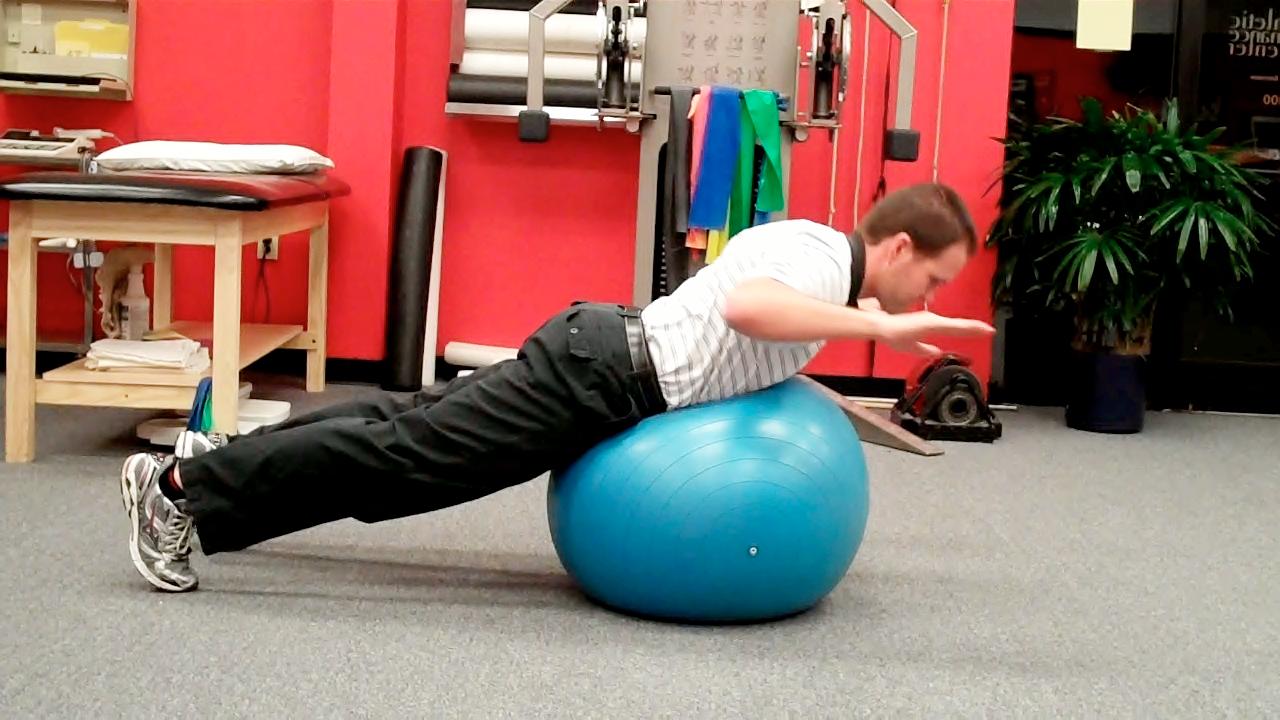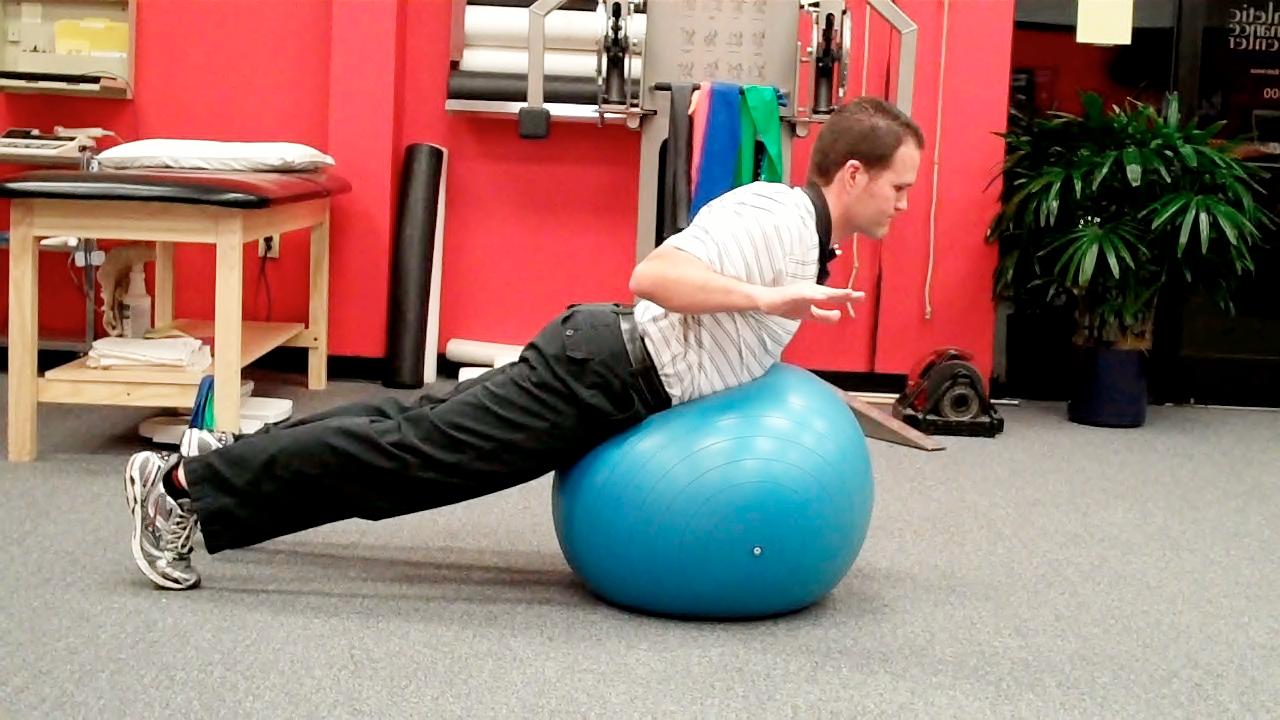
In his latest Functionally Fit column, Brian offers an exercise to activate and strengthen the extensor muscles, rhomboids and lower trapezius for reduced shoulder pain.
See 'Related Resources' below for past Functionally Fits and other exercises and training tips.
Execution:
 |  |
Begin laying face down over the stability ball. Imagine that you are diving into a pool. | Now raise your head and torso up in unison while simultaneously bending the elbows and pulling the shoulder blades back and down toward one another. |
Pause at the top of the motion for 1-2 seconds and then return to the start position. With respect to the degree of extension, I suggest moving naturally and through a full range of motion dictated by the shoulders and spine. Perform two sets of 10-15 repetitions. |  |
Application:
Most of the clients and patients I see with shoulder pain are dealing with faulty scapular mechanics and poor posture. They are in need of greater activation and strengthening of the extensor muscles, rhomboids and the lower trapezius.
The coupled movement in this exercise makes this a natural way to enhance postural and scapular stability, while improving muscular endurance against gravity. Simply think of a reversing a head-first dive into a pool, and the ideal form should come easily when you perform this exercise.
Keep in mind the primary aim in this exercise is to increase muscular endurance and help correct faulty scapular mechanics and abnormal positioning such as winging and tipping. If clients struggle to execute this on the stability ball, you could begin on the floor. However, the floor allows far less shoulder extension at the start position, thereby making the range of motion seem more restricted comparatively.
Precautions:
This exercise poses little (if any) risk to the shoulders. However, some participants may not be able to attain full retraction and downward rotation if the thoracic and lumbar extension motion is limited or painful in any way. Therefore, consider the back when initiating this exercise, and be mindful of the impact any hyperextension at end range may have.
Brian Schiff, PT, CSCS (www.brianschiff.com) is a licensed physical therapist,respected author and fitness professional. He became a Certified Strength and ConditioningSpecialist (CSCS) in 1998. Currently, he serves as the supervisor at theAthletic Performance Center in Raleigh, NC. Brian presents nationally atseveral professional conferences and seminars on injury prevention, rehab andsport-specific training.















